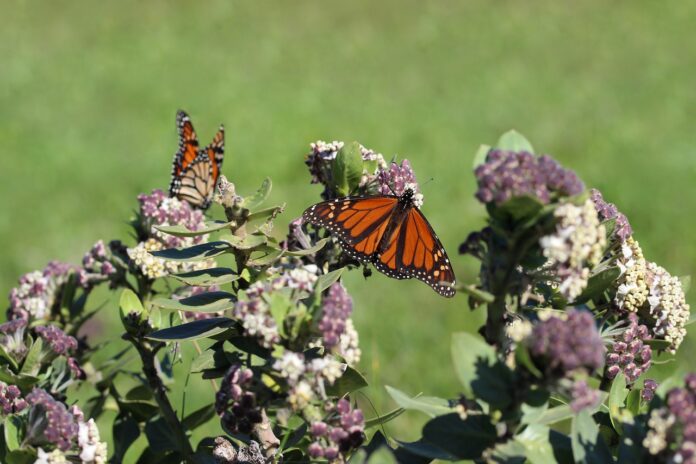By Shane Smith | Mahoning Soil and Water Conservation District
Do you have an area of your yard that floods every time it rains or snow melts? Do you have excess stormwater runoff from your yard? Rain gardens are a cost-effective best management practice and a beautiful addition to landscaping that reduces runoff from or flooding in your yard regardless of where you live.
Impermeable surfaces
Runoff from rain and snowmelt in natural areas such as forests or meadows is slowed and filtered by plants and soil while being allowed to soak into the ground. As the population grows, natural areas are replaced with buildings, roads and other impermeable surfaces.
When this happens, rain and snowmelt can no longer soak into the ground, which increases runoff that can carry fertilizers, pesticides, sediment, automotive fluids, yard waste and other pollutants into streams, wetlands and lakes. This added volume of water and pollutants impairs water resources and harms aquatic and terrestrial life that rely on these resources.
Rain gardens
A rain garden is a constructed depression in the landscape that collects stormwater from a roof, driveway or other impermeable surfaces. It is designed to temporarily hold and allow stormwater to be absorbed, which helps replenish ground water, reduce local flooding and filter out pollutants that would end up in streams, wetlands and lakes.
It can be shaped and sized to fit your yard and installed in a wide variety of soil types that can be amended to increase the rate water is absorbed and promote healthy plant growth. When planted with native flowering perennials, grasses and shrubs, a rain garden provides food and habitat for butterflies, bees, birds and other wildlife.
Installation
If you are a homeowner interested in getting certified to install a rain garden at your home or a landscape professional interested in getting certified to install rain gardens as part of your business, the Northeast Ohio Master Rain Gardener Program, neomasterraingardener.org, is a great resource for you.
The program was originally a collaboration between the Chagrin River Watershed Partners, Cuyahoga Soil and Water Conservation District, Lake County Soil and Water Conservation District and Summit Soil and Water Conservation District that is now expanding to include Medina Soil and Water Conservation District, Stark Soil and Water Conservation District and Mahoning Soil and Water Conservation District.
Contact any of the afore listed program implementers with questions about becoming a Certified Master Rain Gardener.
Soil and water conservation districts interested in becoming a program implementer in the Northeast Ohio Master Rain Gardener Program should contact Elizabeth Hiser at ehiser@cuyahogaswcd.org or Laura Bonnell at lbonnell@crwp.org.
(Shane Smith is the district technical educator for the Mahoning Soil and Water Conservation District. He can be reached at shane.smith@mahoningcountyoh.gov or 330-740-7995.)













